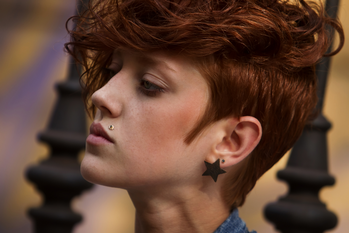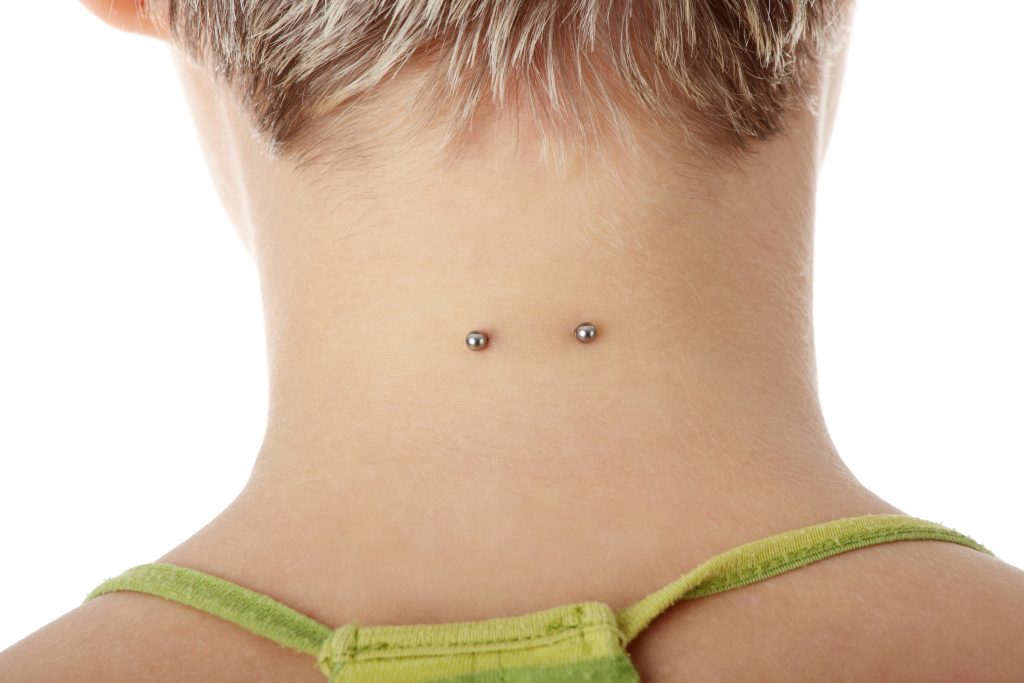
27
February
Surface Piercing Guide And Care
-
0
-
0
-
0

Surface Piercing Guide And Care
Surface piercing, also known as dermal piercing is any piercinginstalled on the surface of the body. It is quite different from anordinary body piercing. Ordinary body piercing has both entry andexit points of the jewelry. In order words, for body piercing thepiece of jewelry goes in through one point and come out throughanother. The commonest pieces of jewelry usually used for surfacepiercing are barbell and captive bead rings
But surface piercinggoes into the body and never come out through another. This impliesthe other part of the jewelry remains embedded in the body. You willonly see the head of the bead or jewelry on the body. This is whysurface piecing requires a lot of guide and care to avoid infectionsand other forms of complications.
Surface piercingrequires double piercing on the same spot. The anchor that would holdthe jewelry is first installed before the jewelry is inserted. Thisis usually done with the aid of either a punch or a needle.
You should neverallow your surface piercing to be done by just an ordinary person. Itshould be done by a professional because it is more difficult tohandle than a regular body piercing. A high level of expertise isneeded in making the pouch on the skin and only an experienced bodypiercing specialist can handle the procedure.
The needles to be used must be the ones specially made for such medical procedures and only specialists usually have them. Another important reason you have to consult a specialist for your
surface piercing is that selecting the size of the needle depends onthe location of the piercing and the anatomy of your skin.
The most dangerous thing about surface piercing is that sometimes symptoms of complications or infections do not emerge until after several days. Everything will seem fine initially.

Some necessary precautionary measures to take after the procedure have been listed below.
•After piercing, the pierced area needs to be covered with abandage for some days
•Depending on howdelicate and sensitive your skin is, it takes between one to threemonths before the pierced area heals completely
•Do not pull ormove the piercing around as the surrounding tissues are prone toirritations
•A mild saltsolution should be used to cleanse the piercing about three times aday before it finally heals up
•Removal ofsurface piercing should also be done by a specialist, especially ifthe piercing has been in place for a while. Some tissues may havegrown on the plate area making removal very difficult.
When your surfacepiercing is done by a non-specialist, you stand the following risks
•Your body mayreject the piercing and forcing it in may lead to major complications
•If needles usedare not well sterilized, it could lead to the development ofbacterial infections
•There could betissue damage in the piercing process
These are thereasons you have to rush to a dermatologist once you see any rash,infection or any other side effect after a surface piercing.
BACK HOME
Ten articles before and after
Tongue Piercing Guide And Care | CHURINGA BODY PIERCING JEWELRY BLOG
Tunnels and stretched ear jewelry choices | CHURINGA BODY PIERCING JEWELRY BLOG
Nipple Jewelry – Changing And Upgrading To A New Look | CHURINGA BODY PIERCING JEWELRY BLOG
Lip piercing guide | CHURINGA BODY PIERCING JEWELRY BLOG
Boys VS Girls – Piercing Guide | CHURINGA BODY PIERCING JEWELRY BLOG
What is the best metal for piercings? | CHURINGA BODY PIERCING JEWELRY BLOG
Ear piercings, the 11 most popular types | CHURINGA PIERCING BLOG
Lip piercings, the 14 most popular types | CHURINGA PIERCING BLOG